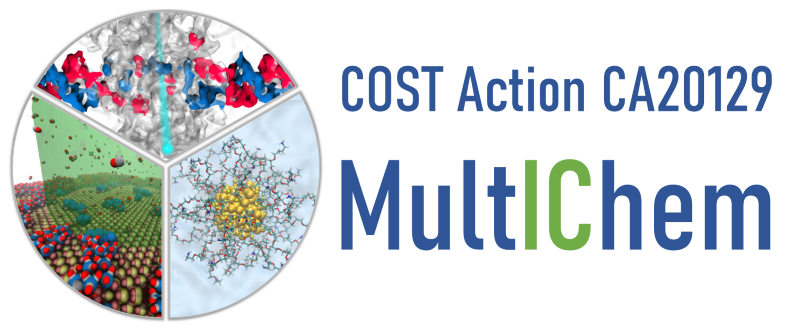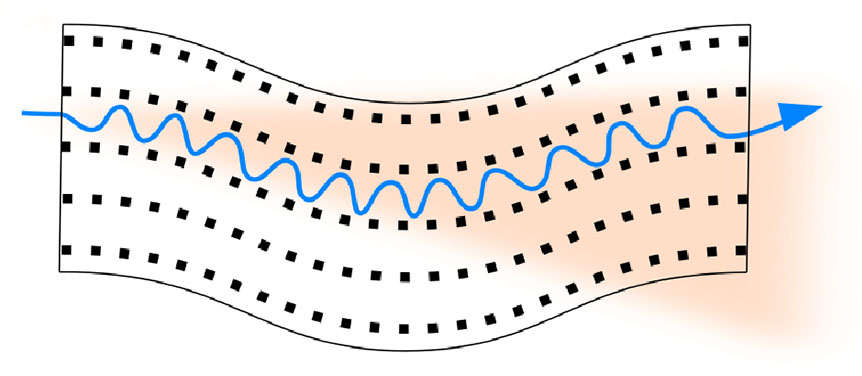The MBN Research Center and members of its team actively participate in the European collaborative research projects, often playing the leading and coordinating roles. Below, the running and completed European projects of the MBN Research Center are presented.
-
 Horizon Europe EIC-Pathfinder Project "Emerging technologies for crystal-based gamma-ray light sources" (TECHNO-CLS) TECHNO-CLS aims at the breakthrough in technologies needed for designing and practical realization of novel gamma-ray Light Sources (LS) operating at photon energies from 100 keV up to GeV range that can be constructed through exposure of oriented crystals (linear, bent and periodically bent) to the beams of ultra-relativistic charged particles. The TECHNO-CLS high-risk/high-gain science-towards-technology breakthrough research programme will address the physics of the processes accompanying the oriented crystal exposure to irradiation by the high-energy electron and positron beams at the atomistic level of detail needed for the realization of the TECHNO-CLS goals. TECHNO-CLS aims at a practical realization of the novel gamma-ray LSs such as crystalline channeling radiation emitters, crystalline synchrotron radiation emitters, crystalline undulators and others that generate radiation with wavelengths orders of magnitudes less than 1 Angstrom, i.e. within the range that cannot be reached in existing LSs based on magnetic undulators. Such LSs will have many applications in the basic sciences including nuclear and solid-state physics and the life sciences. Theoretical, computational, experimental and technological results obtained in the course of this project will pave a way for key technological developments of the LSs and their wide exploitation. Further information about the TECHNO-CLS project can be found here.
Horizon Europe EIC-Pathfinder Project "Emerging technologies for crystal-based gamma-ray light sources" (TECHNO-CLS) TECHNO-CLS aims at the breakthrough in technologies needed for designing and practical realization of novel gamma-ray Light Sources (LS) operating at photon energies from 100 keV up to GeV range that can be constructed through exposure of oriented crystals (linear, bent and periodically bent) to the beams of ultra-relativistic charged particles. The TECHNO-CLS high-risk/high-gain science-towards-technology breakthrough research programme will address the physics of the processes accompanying the oriented crystal exposure to irradiation by the high-energy electron and positron beams at the atomistic level of detail needed for the realization of the TECHNO-CLS goals. TECHNO-CLS aims at a practical realization of the novel gamma-ray LSs such as crystalline channeling radiation emitters, crystalline synchrotron radiation emitters, crystalline undulators and others that generate radiation with wavelengths orders of magnitudes less than 1 Angstrom, i.e. within the range that cannot be reached in existing LSs based on magnetic undulators. Such LSs will have many applications in the basic sciences including nuclear and solid-state physics and the life sciences. Theoretical, computational, experimental and technological results obtained in the course of this project will pave a way for key technological developments of the LSs and their wide exploitation. Further information about the TECHNO-CLS project can be found here.
-
 COST Action CA20129 "Multiscale Irradiation and Chemistry Driven Processes and Related Technologies" (MultIChem) The MultIChem COST Action aims to establish a broad international interdisciplinary, intersectoral cooperation to advance the fundamental understanding of the multiscale irradiation-driven processes and related technologies, paving the path towards major scientific and technological breakthroughs, and socio-economic impacts. By means of pioneering computational methods and modern experimental techniques, the Action will exploit irradiation-driven chemistry in selected applications and related technologies such as methods of controlled nanofabrication, nanocatalysis, development of novel types of radiosensitising nanoparticles, and radiotherapies. Further information about the COST Action MultIChem can be found here.
COST Action CA20129 "Multiscale Irradiation and Chemistry Driven Processes and Related Technologies" (MultIChem) The MultIChem COST Action aims to establish a broad international interdisciplinary, intersectoral cooperation to advance the fundamental understanding of the multiscale irradiation-driven processes and related technologies, paving the path towards major scientific and technological breakthroughs, and socio-economic impacts. By means of pioneering computational methods and modern experimental techniques, the Action will exploit irradiation-driven chemistry in selected applications and related technologies such as methods of controlled nanofabrication, nanocatalysis, development of novel types of radiosensitising nanoparticles, and radiotherapies. Further information about the COST Action MultIChem can be found here.
-
 H2020-MSCA-RISE Project "Irradiation driven nanofabrication: computational modelling versus experiment" (RADON) RADON delivers a state of the art programme which addresses the needs of both research and industry communities working on the advancement of the methods for controlling irradiation-driven nanofabrication, whilst simultaneously training research and innovation staff capable of exploiting modern computational and experimental tools in this area of research and technology. Exposure of a system to radiation results in changes in the system's morphology, electronic, mechanical and catalytic properties. Irradiation of nanosystems especially during their growing or fabrication phase and con-trolling them with the nanoscale resolution is a considerable challenge but if achieved opens enormous op-portunities and will lead to creation of novel and efficient technologies. Currently such technologies provide controlled fabrication of nanostructures with nanometer resolution, although the control of various proper-ties of such structures remains rudimentary. RADON aims at deeper understanding of the underlying molec-ular interactions and the key dynamical phenomena in irradiated nanosystems that will help to improve these nanofabrication technologies. Further information about the RADON project can be found here.
H2020-MSCA-RISE Project "Irradiation driven nanofabrication: computational modelling versus experiment" (RADON) RADON delivers a state of the art programme which addresses the needs of both research and industry communities working on the advancement of the methods for controlling irradiation-driven nanofabrication, whilst simultaneously training research and innovation staff capable of exploiting modern computational and experimental tools in this area of research and technology. Exposure of a system to radiation results in changes in the system's morphology, electronic, mechanical and catalytic properties. Irradiation of nanosystems especially during their growing or fabrication phase and con-trolling them with the nanoscale resolution is a considerable challenge but if achieved opens enormous op-portunities and will lead to creation of novel and efficient technologies. Currently such technologies provide controlled fabrication of nanostructures with nanometer resolution, although the control of various proper-ties of such structures remains rudimentary. RADON aims at deeper understanding of the underlying molec-ular interactions and the key dynamical phenomena in irradiated nanosystems that will help to improve these nanofabrication technologies. Further information about the RADON project can be found here.
-
 H2020-MSCA-RISE Project "Novel Light Sources: Theory and Experiment" (N-LIGHT) The N-Light project suggests an interdisciplinary research programme that will provide the breakthrough needed in theory and experiment to design and deliver the practical realisation of novel gamma-ray Light Sources (LS) operating at photon energies from ~100 keV up to GeV range that can be constructed through exposure of oriented crystals (line-ar, bent and periodically bent) to the beams of ultrarelativistic charged particles. The N-Light research and technologi-cal programme will address the physics of the processes accompanying the oriented crystal exposure to irradiation by the beams at the atomistic level of detail needed for the realisation of the N-light goals. Further information about the N-LIGHT project can be found here.
H2020-MSCA-RISE Project "Novel Light Sources: Theory and Experiment" (N-LIGHT) The N-Light project suggests an interdisciplinary research programme that will provide the breakthrough needed in theory and experiment to design and deliver the practical realisation of novel gamma-ray Light Sources (LS) operating at photon energies from ~100 keV up to GeV range that can be constructed through exposure of oriented crystals (line-ar, bent and periodically bent) to the beams of ultrarelativistic charged particles. The N-Light research and technologi-cal programme will address the physics of the processes accompanying the oriented crystal exposure to irradiation by the beams at the atomistic level of detail needed for the realisation of the N-light goals. Further information about the N-LIGHT project can be found here.
- Completed projects